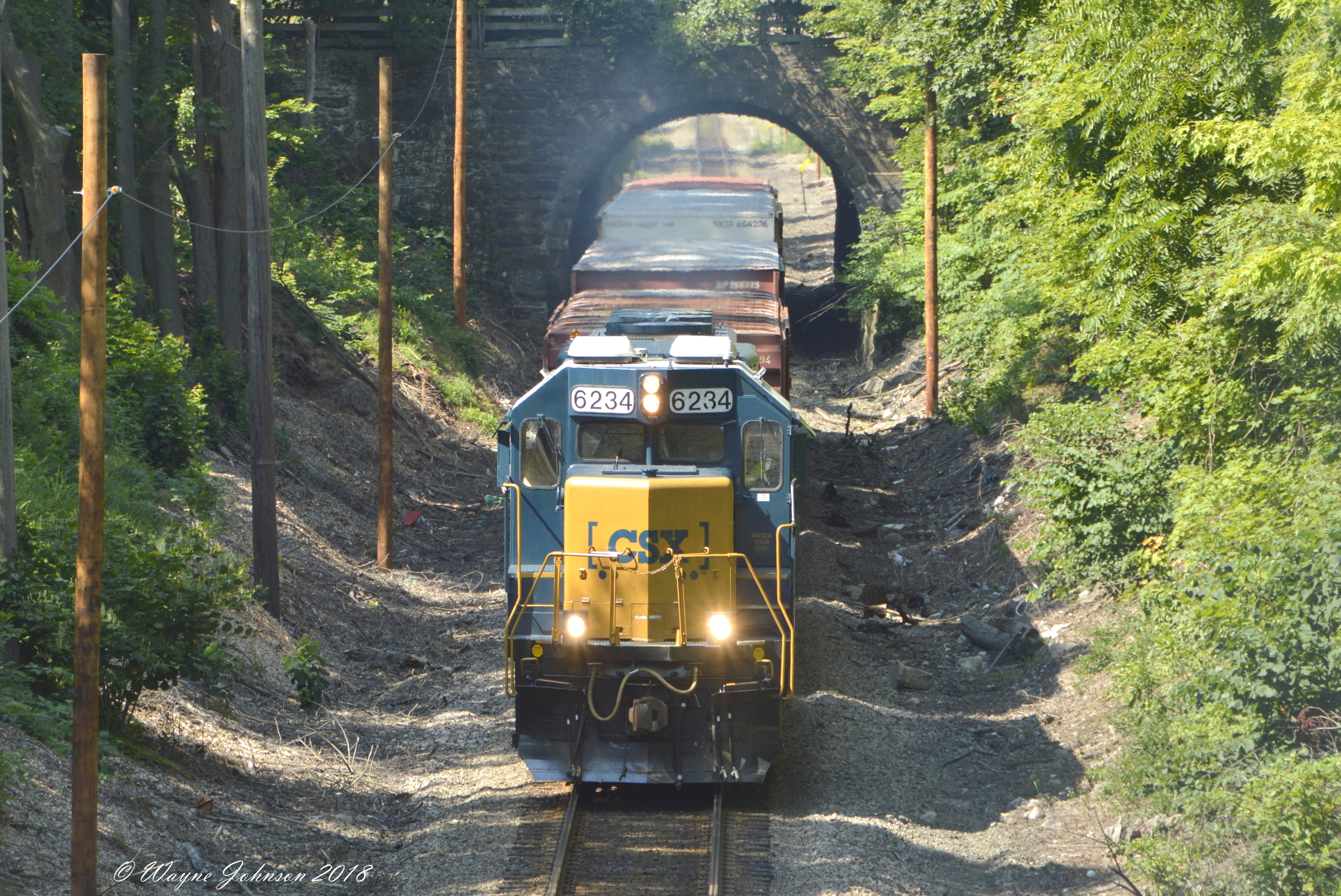F-Line to Dudley
Senior Member
- Joined
- Nov 2, 2010
- Messages
- 9,556
- Reaction score
- 10,449
Presumably if GJ is kept it will be double tracked all the way.
Irrelevant what the mainline track layout is. The crossovers at West allow either northside or southside trains to access any of the platform tracks and switch-off assignments accordingly during any headway gap. All other stations on the line--but especially to Auburndale where the densest service overlap is--are 2 platform tracks max, setting a (very high but finite) service limiter. Anything running thru from the Grand Junction to Auburndale or further slots in with the B&A main's capacity limit set by the 2-platform stations, so traffic separation is not required at West when any one open platform is fair game for joining service flanks there. There are also no HSR considerations where an extremely large speed differential between Amtrak and T equipment would necessitate intercity vs. local platform separation a la the NEC approaches to a fully expanded-out 128 station.
And for a Grand Junction dinky shuttle, platform reverses most of the time will happen sooner than the next headway needs the platform. The only reason Readville on the Fairmount Line needs to be doubled-up with a relocated 2-track platform is so thru-service Franklin/Foxboro trains that are/will be interlining there have an open platform while any shuttle train is reversing. Shuttle train vs. shuttle train won't get in each other's way because the reverse maneuver doesn't overspill the next headway. But that's doubly moot at West because the adjacent yard means reversing shuttle trains don't have to take up platform time at all for the ends change; they can/will pull ahead into the yard turnout to do that, leaving the platform free-and-clear for anyone on the next slot. Even when the T inevitably trades out the rest of the layover in a Harvard land deal, simply keeping a length of turnout track beyond the platform allows the ends-change to happen out of the way exactly the same.
In short, there is not a single regular-service situation you can feed into a train simulator and come up with any scenario where >3 platforms would ever be occupied at once, even if you saturated service levels on BOTH southside and northside flanks to their uppermost limits. The variables simply don't exist to make a 4-way platform meet happen on that track layout, because the availability of those pick-'yer-platform crossovers on the station approach affords too much above-and-beyond capacity. As is, you'll almost never have a real 3-way meet to photo-op at that stop because of the built-in flex for headways to bob-and-weave their platform assignments around each other. And that's before we even get to the elephant in the room of the Grand Junction being such a born capacity gimp (because of its northside, not southside, merge) that traffic modeling is almost certainly going to have to slash back max allowable service. Even if you can fit 15 min. dinky headways by the skin of your teeth, there'd be no capacity leftover for interlining. So why is it being given co-equal platform capacity to the southside flank that can send an enormous layer cake of Riverside short-turns, Framingham locals, Worcester semi-locals, Worcester semi-expresses, Amtrak Inlands, and possible Northborough branch service on 2 Back Bay-Auburndale platform tracks??? That doesn't wash.
Fuck...you're not even taking those superfluous RR platforms off for Urban Ring the way the track layout locks them onto the RR side. You're building the LRT platforms over where the busway is, probably on slack land retained on the side of the incredible shrinking layover yard. This render can't even physically serve as future-proofing design for that.
Take all this, then ask why is this design predicating itself on traffic modeling that does not and cannot exist in the real world? When the modeling above-and-beyond what exists is the sum total of the cost blowout of being forced hell or high water to stack the busway on a deck. The difference between this arbitrary choice of 4-track station and a more compact 3-track station that's already above-and-beyond the capacity of all you can conceivably pass through there is the difference between having to do the cost-blowout stacked decking for the busway vs. having enough additional side room to ramp down a busway to ground level at fraction of the cost. Somebody needs to explain why it...must...be that we're nearly doubling the construction cost with a decking scheme that serves no known service capacity requirement at no known space deficiency vs. what more compact configuration would suit the fully-known service capacity ceiling. I mean, we're not in early prelim design phase here. This shit has been chewed on conceptually for enough years now that basic-ass considerations like "How many platforms?" should've been completely fleshed-out and final by now. Either the contractor took naivety about the world outside the project-area slab and instructions that "this is a showcase station!" to utterly stupid extreme in a total contextual vacuum or this is exactly the kind of cost blowout an Admin. that barely conceals how much it wants to punt this build off past 2040 would love to see manufactured as evidence for the big punt. Stupidity or kabuki dance: take your pick. Either way taxpayers are being played for fools thinking this is what they need to shell out for to have any service at all, much less all the service they could ever hope for.
The planning brainfreeze that's afflicting every cog of the Pike Realignment/Beacon Park Redev is beyond infurating. And it's spreading like wildfire to all the moving cogs just as we're supposed to be locking all final plans down to be shovel-ready. This all is turning into an evolving disaster.
Last edited:


